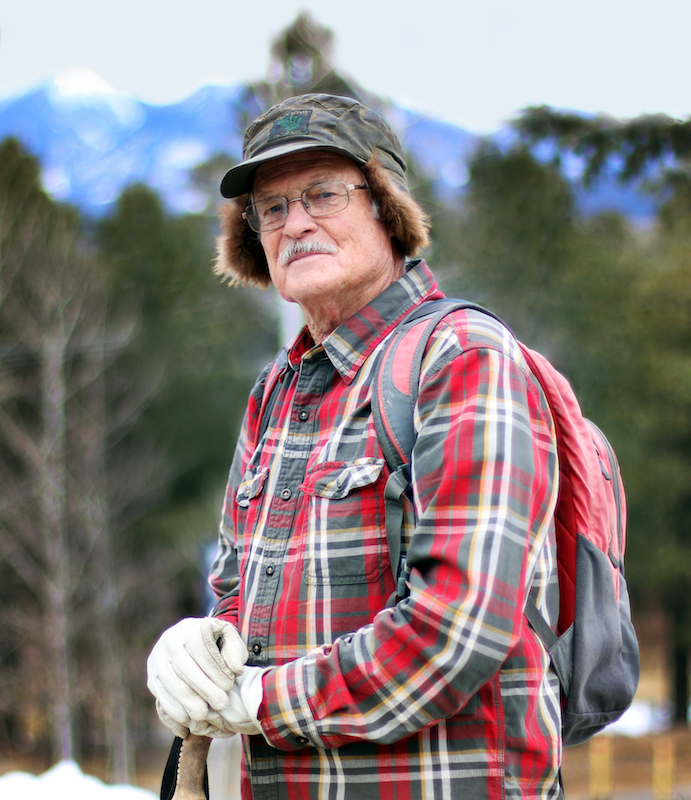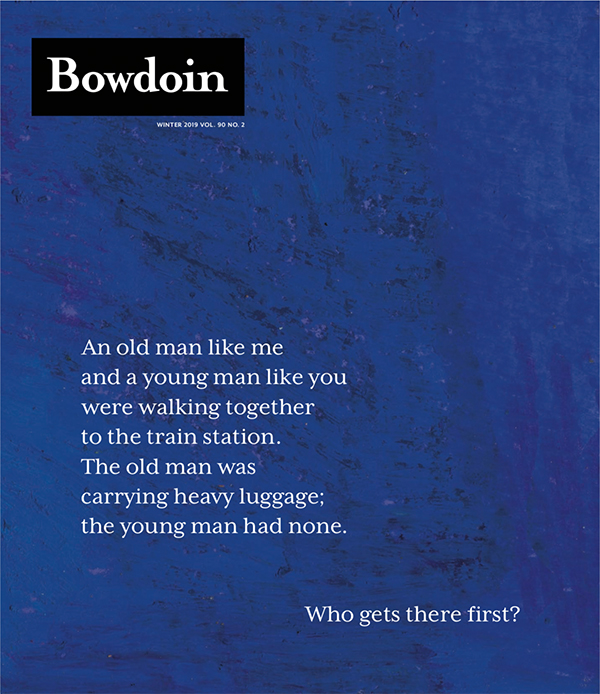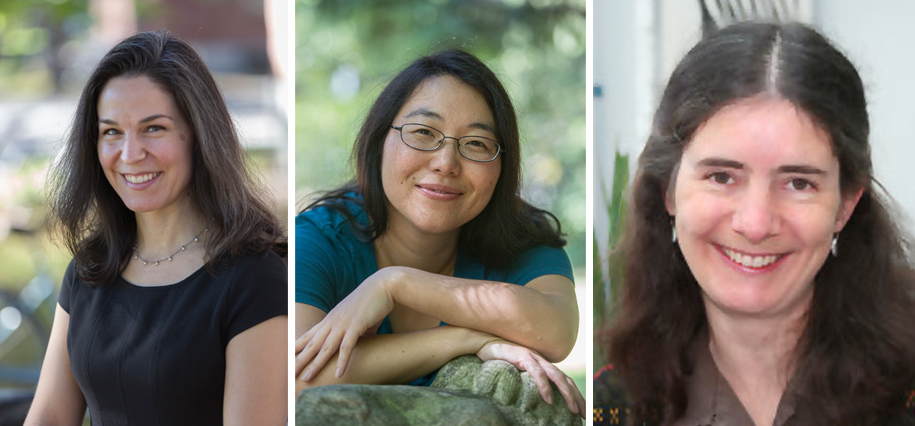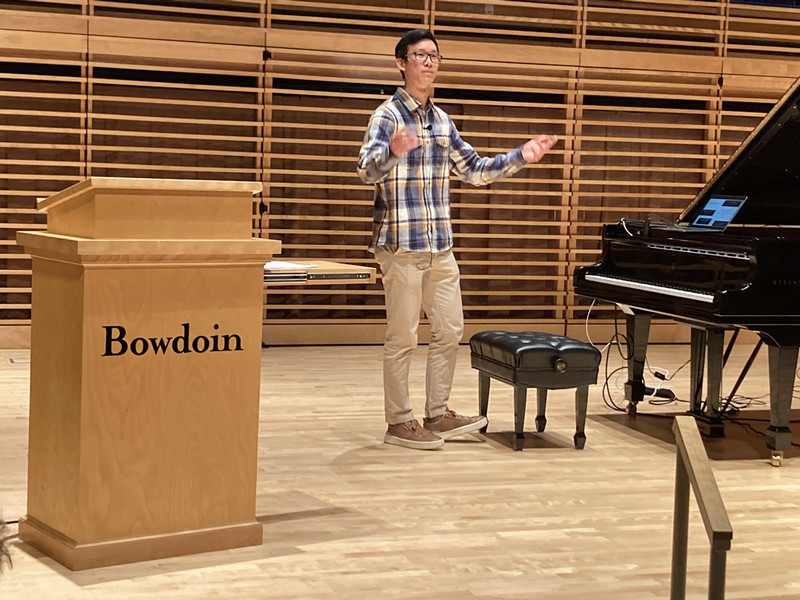Numbers Guy
By Bowdoin Magazine
A friend and fellow adventurer gave Robert Packard ’58 his signature multiweather hiking cap from New Zealand. Photo: Carly Banks
I ran track and cross country at Bowdoin. My father, Class of 1932, ran track under Jack Magee, who was still the coach my freshman year. Sabe took over after that. I was one of the top masters (over forty) runners in the US from 1976 to 1983, and held ten US age records, and had a marathon PR (personal record) of 2:35:00 (in winning the master’s division of the Fiesta Bowl Marathon). I was actually a better runner in absolute terms in my forties than I was at Bowdoin. As far as I know, none of my national records still stand, but I think some of my state of Arizona records might.
My roommate my freshman year at Bowdoin (in 29 Hyde Hall) was Roger Howell '58, who ended up valedictorian of our class and became President of Bowdoin, one of the youngest college presidents in the country.
I didn’t do any climbing growing up in Maine. I milked cows, slopped pigs, hoed potatoes, and worked my way through college, not costing my parents a penny. One of the reasons I was able to do that was because I was one of the four State of Maine Scholars in my class. That took care of tuition. I had summer jobs every summer before, during, and after Bowdoin. On campus, I washed dishes and waited on tables, and later became treasurer and steward of my fraternity, Theta Delta Chi, covering board and room.
My first mountain was Mt. Katahdin in 1958 at age twenty-two. I liked it. I’ve been up there twelve times and did other summits in New England. Goals evolve and change over time. Moving west opened up new opportunities. When I first sampled the Grand Canyon, I had no idea I'd end up hiking its full length. State high pointing [the sport of ascending to the point with the highest elevation within a given area] led to county high pointing. Colorado fourteeners [mountain peaks of at least 14,000 feet] lead to thirteeners, then to other mountains in other states, and all over the world.
I have hiked and climbed high points of five continents, forty-four countries, all fifty US states, 1,780 US counties, forty-nine US national parks, and 107 US national forests.
I'm very goal oriented, but I also appreciate the side benefits: beautiful scenery, keeping in shape, good friends, the challenge of striving, mental and spiritual satisfaction. I'm a sucker for lists and there are books and websites filled with lists of summits, and I've completed literally hundreds of lists. I hike alone a lot, but with friends when opportunity knocks or difficulty demands.
Getting into mathematics was a natural outcome of my progression in education and my line of least resistance. My ability to figure things out took ascendance over my ability to memorize. Thinking logically and deductively came naturally for me. I had good teachers at all levels—grade school, high school and college.
I saw the aesthetic qualities in mathematics: the ability to make statements as close to absolute truth as humanly possible; the elegance of the proofs of the truth embedded in theorems; the cleverness of counter examples to conjectures.
At Bowdoin I carried a dual mathematics-chemistry major up through my junior year. Then I dropped the chemistry, getting tired of acid holes in my pants and preferring the pure deductive thinking of mathematics over the evidentially based chemistry.
While getting an MS in mathematics at Lehigh, I taught as a graduate instructor and discovered I could teach well and project the aesthetics of mathematics to others. Teaching as an instructor at the University of Maine, I saw professors who earned twice as much, taught fewer classes, and didn't necessarily do as good a job. That (plus getting married) motivated me to go on for a PhD. I found it wonderful being paid to do something I enjoyed.
One of thousands of mathematical truths is that the irrational numbers (non-repeating decimals) take up all the room on the real line and the rational numbers (repeating decimals) take up none. There are different sizes of infinity! Another interesting statement in mathematics is the Goldbach Conjecture: every even integer can be written as the sum of two primes. No one has been able to prove it and no one has been able to find a counter example to it. So, at the moment we don't know if it is true or false.
It would be a sad world if everyone was good at mathematics, just as it would be sad if everyone was good at music. Following the deductive path takes discipline, and I had to work at it. I think that is why I was successful as a teacher.
More people might be better at mathematics if we had more math teachers who really understood what it is—a way of thinking as opposed to arithmetic or calculating.
I confess that the part of running I liked best was winning races. I was actually a better runner in absolute terms in my forties than I was at Bowdoin. I pushed myself mercilessly in training and was actually relieved to stop serious competitive running after a bad calf muscle tear in 1983. I jogged for a couple of years after that then stopped running entirely.
What am I proud of? Helping my wife raise two successful sons. Being of service to my UU Congregation, community, NAU athletics. Getting a PhD in Mathematics. Obviously, I'm proud of my overall hiking/climbing career. I always have trouble naming a favorite. Katahdin, my first and in my original home state. McKinley with my older son, Erik. Elbrus with my younger son, Keith. Aconcagua with both. Washakie Needles in Wyoming alone. Tacana, the second-highest summit in Guatemala and the highest point in Chiapas State in Mexico was highly memorable.
I've also had many failures, over one hundred. Most of the time I've gone back a second or third time and had success. But I've had three significant foreign failures: Mt Kenya, high point of Kenya; Gora Baluka, high point of the Altai Mountains in central Asia; and Marguerita Peak in Uganda.
I've done way more summits with my son Erik than with anyone else. He's also fanatic about climbing goals. He has way more summits in Colorado and Utah than I do. (Also, one of my refereed math papers was co-authored with him before he got his PhD from Texas Tech and became a math professor at Colorado Mesa University in Grand Junction.)
My most dangerous situation hiking came in November of 1981. I went on a nine-day hike in the Grand Canyon with a friend (with whom I've been on over 220 ambitious hikes and climbs, many multi-day). We climbed several interior buttes, but we were unprepared for a major early season blizzard and we had trouble getting out of the canyon and back to our vehicle.
On the tenth day, we were out of food and fuel and were exhausted. It was a close call. The trip ended up taking eleven days and I was hospitalized for weeks with frostbite.
It took months for healing. I kept all my toes, but four toes have permanent damage. Yet, I came back to set a few more running records before quitting running two years later.
I'm still climbing and meeting goals, but I no longer do fifth-class climbing or alpine climbing or go backpacking, and I shy away from climbs with excessive elevation gain. Just back from doing six summits in southwest Arizona. I tried a seventh, but gave up when exposure was too great and hand and foot holds too few.
One of my goals now is to beef up my lead in US summits with over 1,000 feet of prominence. I have plans for this in northern New England, Nevada, and the Pacific Northwest. Maybe a trip to Egypt for the high point of that country.
I am now into peaks measured by prominence, the difference between the summit elevation and the elevation of the lowest contour which surrounds the peak and no higher peak. There is a great interest in this in some circles because prominence picks out significant peaks in wide geographical areas and recognizes many peaks of lower elevation, but which stand out relative to their surroundings.

This story first appeared in the Winter 2019 issue of Bowdoin Magazine. Manage your subscription and see other stories here.



